Flavescence dorée
Flavescence dorée
Profile
Flavescence dorée is a quarantine disease caused by cell wall-less bacteria called phytoplasmas, which causes yellowing in grapevines. Therefore, this disease is also called golden yellowing. The main vector of these phytoplasmas is the American grapevine cicada.
Biology
The flavescence dorée phytoplasma requires special plant cells for its survival, the so-called sieve cells of the bast tissue of root, stem, shoot and leaf. Phytoplasmas are generally obligate parasites, meaning they cannot survive outside their host.
Infestation by phytoplasmas causes metabolic disorders in the plant, resulting in yellowing symptoms, growth disorders, and sometimes vine death. This disease pattern can also be caused by other rebpathogenic phytoplasmas (e.g. Candidatus Phytoplasma solani, the causal agent of blackwood disease). Therefore, phytoplasmas can only be detected and differentiated by molecular genetic PCR analysis.
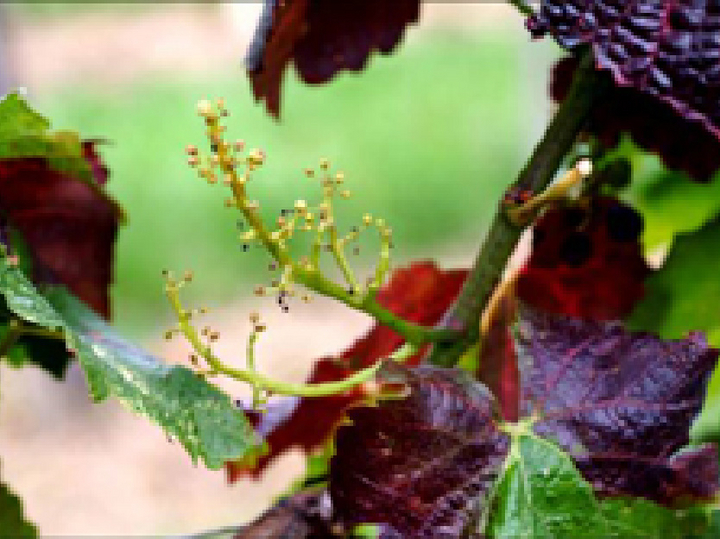
Symptoms on the inflorescences (shoots) and berries.
Hives and berries may wither when infested with flavescence dorée. Fertilization disorders (shedding of flowers or berries) also occur. Poor ripening of berries (high acidity and low must weight) and bitter tones greatly reduce the quality of the crop.
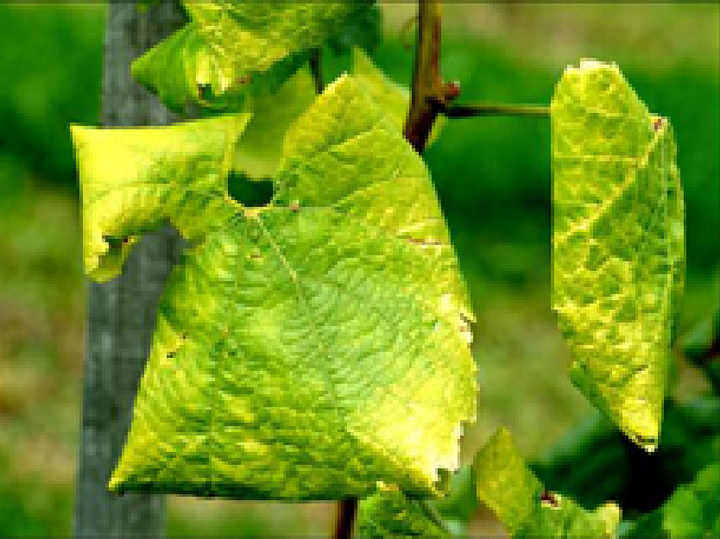
Symptoms on the leaves
Early fall coloration appears on the leaves in the summer. These leaf color changes may affect the entire leaf or only parts of it. In white wine varieties, the leaves are yellowed, and in red wine varieties, the leaves are bright red. The leaves become brittle and sometimes show a metallic sheen. Leaf edges that curl downward are typical, although the degree of curling depends on the variety.
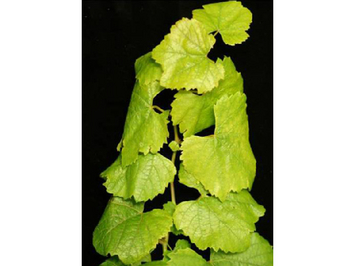
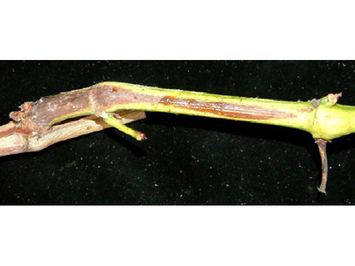
Symptoms on the shoots
The internodes (=spaces between the leaves) of the stingy shoots are often shortened, and the younger leaves are sometimes arranged on the shoot like roof tiles. The shoot itself lignifies poorly to not at all. Unwoody shoots are rubbery elastic and can hang down.
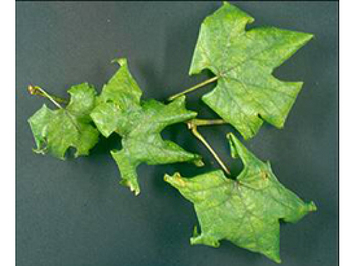
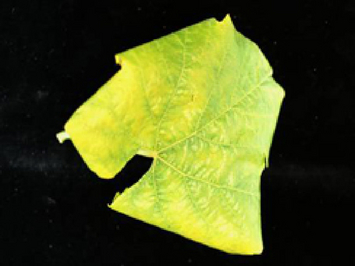
Possibilities of confusion
Symptoms similar to those of flavescence dorée are also found in leafroll disease, a viral disease. The main distinguishing feature is the leaf veins: In viral disease, leaf veins remain green; in phytoplasmas, they turn yellow.
Distribution
Flavescence dorée is currently only found in European wine-growing regions. It occurs in the following countries (as of 2021): France, Italy, Portugal, Switzerland, Slovenia, Croatia, Serbia, Hungary, Montenegro, Romania, and for the first time in the Czech Republic in 2021.
In Austria, the occurrence was detected for the first time in 2009 in southeastern Styria. At present, mainly Styrian wine-growing regions are affected, and occasionally also Burgenland (as of 2021).
Propagation and transmission
Flavescence dorée phytoplasma is transmitted from vine to vine by the American grapevine cicada(Scaphoideus titanus). The American grapevine cicada sucks exclusively on grapevines and is attached to them with its entire life cycle.
The pathogen can also be spread by latently infected planting material.
Economic importance
The epidemic spread and the considerable costs for control measures (grubbing up of the vines, additional use of plant protection products to control the disease vector, indirect damage due to yield loss or additional costs for replanting) justify the high economic relevance of flavescence dorée for viticulture.
Prevention and control
- In the event of an occurrence of flavescence dorée (positive laboratory result), the official state plant protection service must be notified (obligation to report quarantine diseases). The responsible state plant protection authorities will then arrange for the necessary measures to be taken to eradicate or contain the disease.
- The most important measures to control flavescence dorée are the grubbing up of diseased vines and the control of American grapevine cicada.
- Pruning measures, such as those used for blackwood disease (stolbur), are not recommended because they mask the disease and the pruned vines are a dangerous starting point for further spread.
- The disease vector, the American grapevine cicada, is relatively easy to control with insecticides (see list of plant protection products approved in Austria).
Specialized information
Laboruntersuchungen
Wir bieten derzeit folgende Laboruntersuchungen an:
- Molekulargenetische Untersuchungen an Weinreben oder anderen Wirtspflanzen auf Infektionen durch Phytoplasmen
- Molekulargenetische Untersuchungen von Rebzikaden auf Infektionen durch Phytoplasmen
Publikationen
Reisenzein, H. & Strauss, G. (2019): Sporadic outbreaks of „flavescence dorée“ in Austrian vineyards and the role of Phlogottetix cyclops as potential vector. Phytopathogenic Mollicutes 9(1), 61-62.
Strauss, G. & Reisenzein, H. (2018): First detection of Flavescence dorée phytoplasma in Phlogotettix cyclops (Hemiptera, Cicadellidae) and considerations on its possible role as vector in Austrian vineyards . Integrated Protection in Viticulture IOBC-WPRS Bulletin Vol. 139, 2018, pp. 12-21
I. Kopacka, R. Steffek, G. Strauß, H. Reisenzein (2017): Modeling spatial and temporal spread of Flavescence dorée in two Austrian vine growing areas. IOBC-WPRS Bulletin Vol. 128, 2017 pp. 66-74
Strauß, G., Reisenzein, H., Steffek, R., Schwarz, M. (2014): The role of grapevine arbours as overlooked sources of „flavescence dorée” and Scaphoideus titanus in southeastern vineyards of Austria. In: Phytoplasmas and phytoplasma disease management: how to reduce their economic impact, Bertaccini A (ed), IPWG – International Phytoplasmologist Working Group, pp 239-245
Steffek, R., Reisenzein, H., Strauss, G., Leichtfried, T., Hofrichter, J., Kopacka, I., Schwarz, M., Pusterhofer, J., Biedermann, R., Renner, W., Klement, J., Luttenberger, W., Welzl, A.G., Kleissner, A., Alt, R. (2011): VitisCLIM, a project modelling spread and economic impact of Grapevine Flavescence dorée phytoplasma in Austrian viticulture under a climate change scenario. Bulletin of Insectology 64 (supplement), 191-192.
Reisenzein H & Steffek R, 2011. First outbreaks of grapevine “flavescence dorée” in Austrian viticulture. Bulletin of Insectology, 64 (Supplement): S 223-S224.
Last updated: 12.07.2022
automatically translated